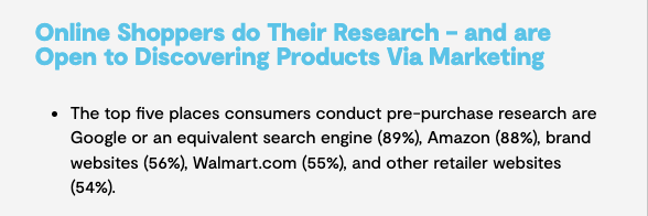How shoppers are using Gemini, Bing and ChatGPT on their path to purchase

Brian Hennessy
Talkoot Co-Founder & CEO
This is the first installment in a series of articles on Chat Experience Results Page (CHERP) optimization and how to ensure your products appear prominently in the chat results of LLM-powered chatbots like Google Gemini, ChatGPT and Bing.
Aside from the Internet itself, it’s safe to say no technology has had a greater impact on how people shop over the last two decades than the Search Engine. Today 89% of shoppers consult a search engine results page (SERP) when making a purchase.
(Source: powerreviews.com)
Now another results page threatens to test the SERP’s primacy: The CHERP. With their vast knowledge bases and rapid response capabilities, LLM-powered chatbots like OpenAI’s ChatGPT, Google’s Gemini and Microsoft’s Bing are poised to become an indispensable tool in shoppers’ hunt for just the right product.
In a move that speaks volumes to the importance of this new technology in the buying journey, Amazon is working on its own chatbot that will “reimagine Amazon Search with an interactive conversational experience” to help customers make better buying decisions.
Though this technology is still in its infancy, the gospel of how to use these chatbots as shopping assistants is already spreading among early tech adopters. It won’t be long until these Chatbots exert as much—or likely more—influence on shopping behavior as traditional search engines.
Retailers that start optimizing their product content for CHERPs now will have an unfair competitive advantage over digital-laggard competitors for years to come.
To understand how to capitalize on this new technology, it’s important to understand how shoppers might use it to discover and purchase your products.
In this article, we’ll explore how shoppers will use chatbots on their path to purchase. First, we’ll cover why shoppers might use a chatbot over a search engine, then we’ll dive into each chatbot and talk about the pros and cons of using each as an AI shopping assistant. Finally, we’ll discuss the different ways shoppers might utilize a chatbot to complete a particular type of shopping task.
Why use a chatbot over traditional search engine for product research?
The purpose of traditional Search Engine Optimization (SEO) is to try to anticipate what consumers are looking for and create valuable content chocked full of keywords that will best match their query.
With chatbots, there is no need to anticipate what consumers will search for. The chatbot is able to understand a user’s query and serve up a unique, perfectly customized answer. In other words, it optimizes it’s results on the fly, as long as there is enough source content (read: detailed product information) on the internet for it to pull from.
The superpower of these chatbots is their ability to synthesize thousands—if not millions—of datapoints from across the web into a few paragraphs or chart that is easily digestible and perfectly matches what the user is looking for.
So, instead of relying on professional product recommendation sites like Wirecutter and Engadget to review products based on their predefined criteria, shoppers can instantly parse millions of customer reviews across thousands of retail websites to determine how actual users rate products based on the criteria that matters to the shopper.
As an example, if I wanted to buy the most authentic Korean Gochujang sauce available for sale in the US, before chatbots I might have started my search by googling “most authentic gochujang sauce.”
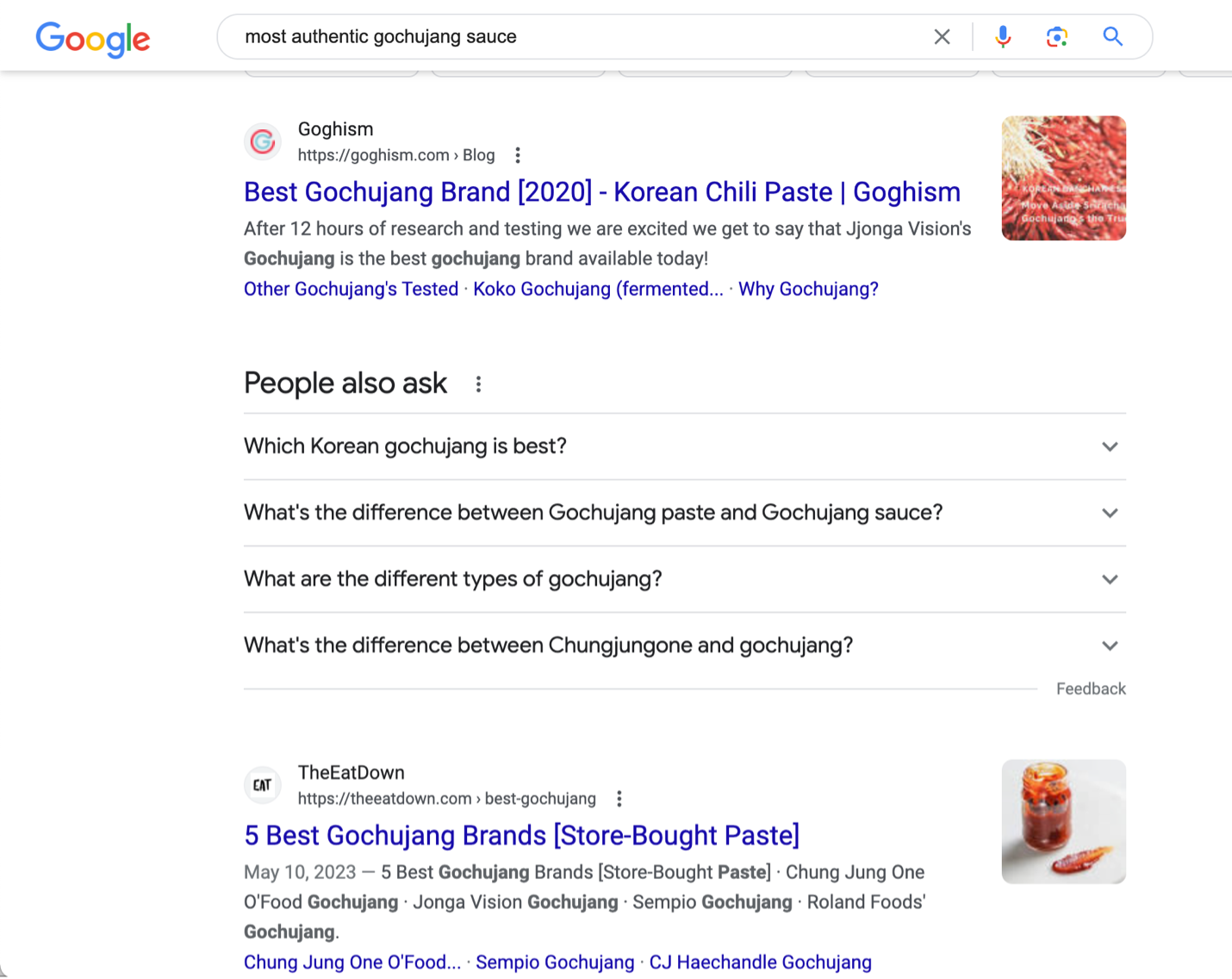
(Search results for most authentic gochujang sauce.)
Unfortunately, there aren’t enough people like me searching for authentic gochujang sauce to compel professional SEOs to create content around it. So, I’m left to manually search through several lists of “Best” Gochujang brands to find a review that mentions a brand’s authenticity.
Or I could spend hours poring through customer reviews on Amazon myself until I found a review that convinces me that one brand was more authentic than the rest.
By turning to a chatbot instead of a search bar, I can quickly cut through all the noise and determine which brands of Gochujang sauce are rated most authentic by real customers.
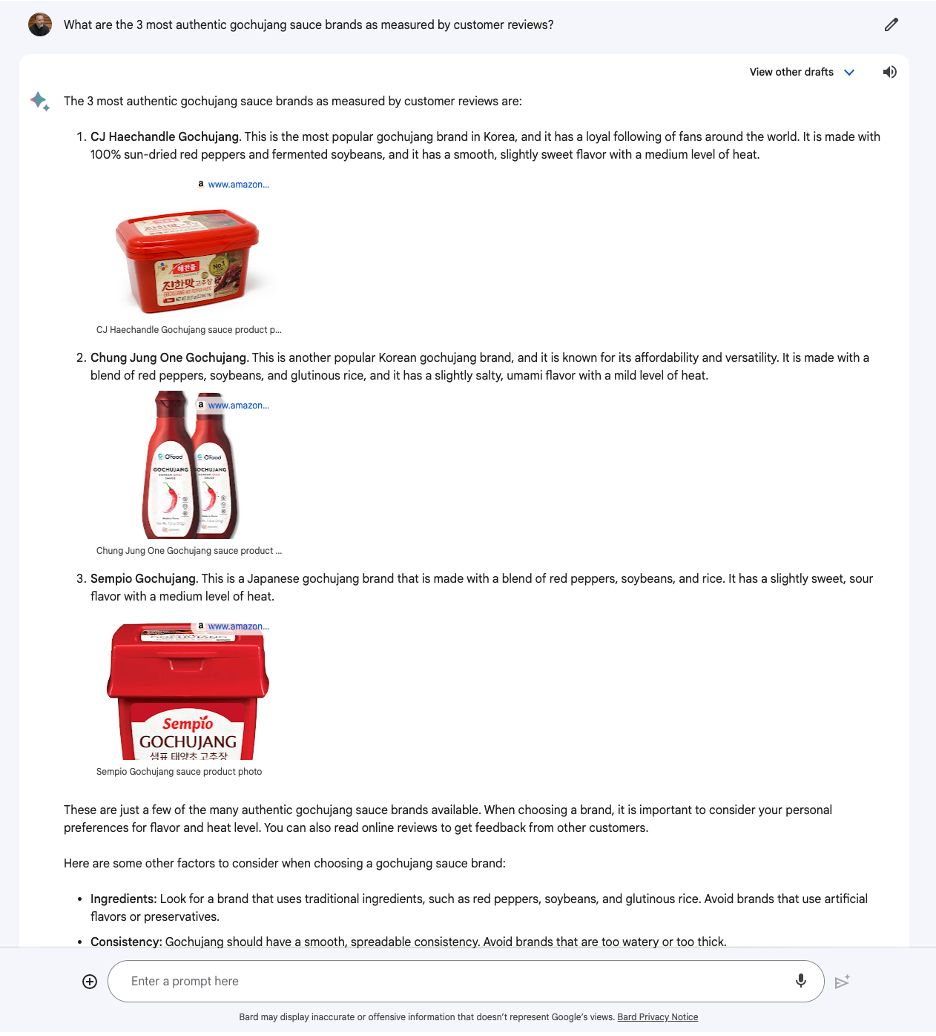
(Gemini results for most authentic Gochujang sauce.)
In other words, as a consumer, I don’t have to make my purchase decision based on the criteria deemed important by professional reviewers or SEOs. I can make my decision based on the criteria that matters most to me, as reported by thousands of actual users of the product.
This is just one example, but these chatbots are a good choice anytime a shopper wants to quickly gather and synthesize data from across websites. If you do happen to value professional reviews, for instance, rather than slogging from one review site to the next sifting through long articles, a chatbot can summarize reviews from several review sites and compile them into a simple-to-read chart.
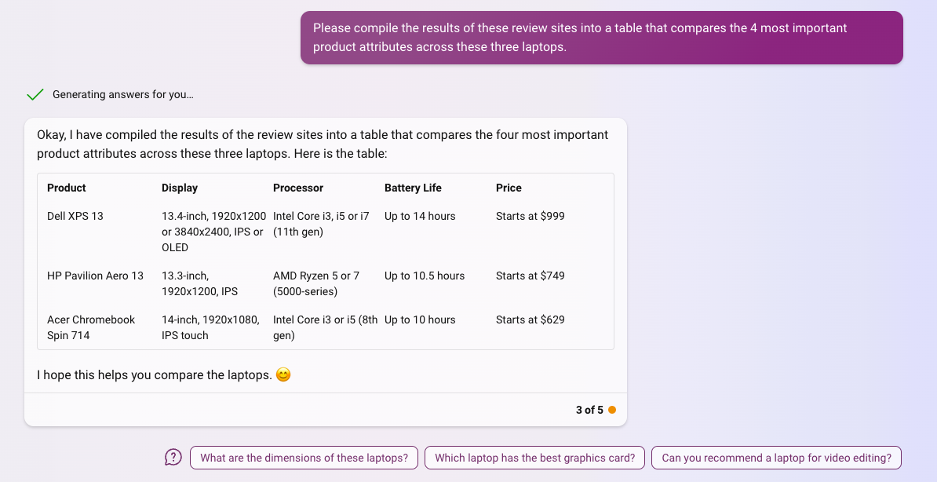
(Source: Microsoft Bing)
How each chatbot fares as a shopping assistant
ChatGPT
ChatGPT is a chatbot developed by OpenAI powered by the GPT-3 and GPT-4 language models. Whereas Bing and Bard are focused on the search-related goal of surfacing quality information and answers, ChatGPT’s creators designed it for more open-ended use cases, like content creation and coding.
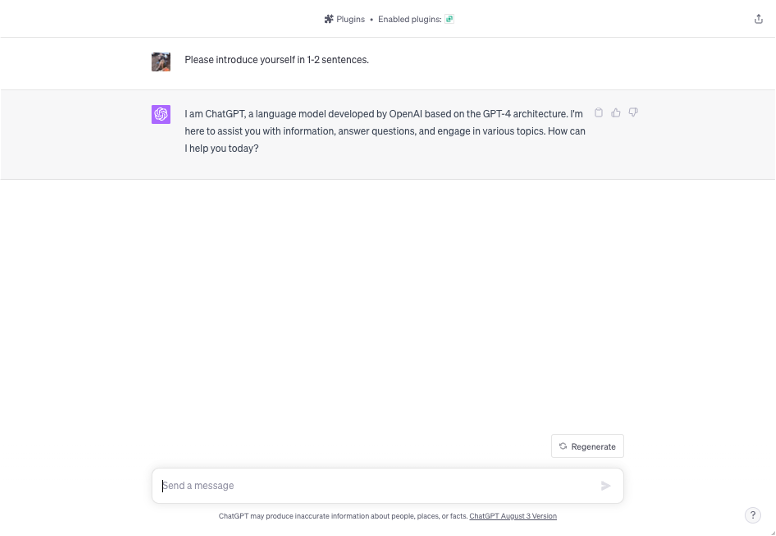
(Source: OpenAI’s ChatGPT)
The Upside: First to market, ChatGPT stands out with its simple, user-friendly interface. It currently offers an advertising-free experience and provides answers in a natural, human language. Trained on 170 trillion parameters, versus Bard’s 137 billion parameters, ChatGPT is the undisputed heavyweight champion of LLMs. This makes it useful for a wide range of tasks.
The downside: The drawbacks of using ChatGPT—the paid or free version—as a virtual shopping assistant are rather extensive unfortunately. The first challenge is that its free version is not connected to the internet. That means it only has access to product information from 2021 or earlier. Without access to the most current product content, no matter its other advantages, the free version just can’t be relied upon as a shopping assistant.
With the paid subscription, users are able to access the purportedly more accurate GPT-4 LLM, as well as a plugin that connects ChatGPT to the internet. Yet even with the $20/mo subscription that provides access to GPT-4 and the necessary plugin to access the internet, performance can be slow and unpredictable. And subscribers are limited to only 15 inquiries a week via the plugin unless they pay for yet another subscription to the plugin (Yikes).
Once you drop the money for the paid version and connect the plugin, ChatGPT still stubbornly refuses to access customer reviews from retail websites. It will only provide a summary of published product reviews from media outlets. Since you can just as quickly access this type of content with a quick Google search, why would someone go through the extra time and expense of having a chatbot google the results for you.
The Verdict: ChatGPT was groundbreaking when it launched and it has proven incredibly useful across many tasks, both professional and personal. But its current capabilities as a shopping assistant are severely limited due to its lack of a direct connection to the internet.
Bing
As with ChatGPT, Microsoft’s Bing chatbot is powered by GPT-4. But, based on the user experience, Bing appears to be more focused on deepening the power and functionality of the Bing search engine. Bing is still in limited release, so users need to download the MS Edge browser and add their name to a waitlist.
The Upside: Bing is connected to the internet and can access the most up-to-date information about any product so long as that information is available online. It can access customer reviews directly from retail websites if prompted. It is even able to create comparative charts of products based on their benefits and features.
The Downside: Though it’s being rolled out to other browsers for select users, for most the rest of us, Bing is currently only available via the Microsoft Edge web browser. Bing also restricts users to asking only five questions at a time on any one subject.
When you ask Bing to provide a list of products with the best customer reviews, it defaults to offering a link to a published review from a media outlet, with a short summary of the reviewer’s findings. Serving up links to other sites doesn’t offer much of a benefit over a traditional search engine. Again, you are able to access and summarize real customer reviews with Bing, it can take a bit more work and sophistication using prompts to get the results you’re looking for.
Finally, like many Microsoft apps, its user interface is less intuitive and more complicated and ad-filled than ChatGPT or Bard.
The Verdict: While Bing does have certain advantages over ChatGPT as a virtual shopping assistant, its clunky user experience, laggy performance, reliance on professional reviews and requirement to download Microsoft’s Edge browser limits its usefulness.
Gemini
Gemini is Google’s Chatbot powered by their proprietary Pathways Language Model (PaLM 2). It is still in development and, like Bing, only available via waitlist.
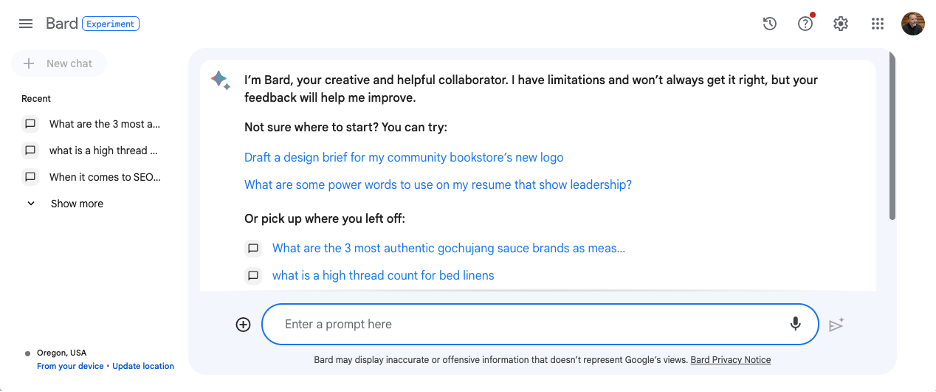
(Source: Google Gemini)
Upside: Similar to ChatGPT, its user interface is streamlined and intuitive. While all LLMs, including Gemini, grapple with accuracy challenges, when it comes to research tasks—including product research—Gemini’s accuracy seems to be on par with ChatGPT when powered by GPT-4.
Unlike ChatGPT, which excels in creative outputs, Gemini emphasizes factual and informative responses, aligning more closely with shopper expectations. In terms of response times, Gemini consistently outperforms its counterparts. Currently, Gemini offers an ad-free environment, but this might change as its user base expands.
Downside: Gemini is still under development, so it’s not available in all languages and geographies. Gemini’s performance is solid but, like the other two chatbots, it’s accuracy can be hit or miss.
The Verdict: In a comparative analysis, Gemini’s user experience, performance, accuracy, and versatility make it the most promising LLM for shopping assistance. As with standard search, Google’s tech will likely be become consumer’s choice.
To sum up, Gemini will likely be consumers’ preferred choice
As with traditional SEO practices where best practices recommend optimizing for Google over Bing, optimizing your content for Gemini over Bing and ChatGPT will likely yield the best results.
The three ways consumers can use chatbots as a shopping assistant
These chatbots roll out new features and functionality almost weekly, so this list is certain to grow and evolve quickly. But here are three ways shoppers can quickly begin using these chatbots to make better and faster purchase decisions: Product discovery, product comparison and product deep dive.
Product discovery
When someone has a problem but doesn’t know what product will best solve it, they can turn to chatbots to quickly find out if there are products they can turn to. The below 1-minute video is an example of how one might discover an eco-friendly alternative to liquid laundry detergent using Gemini (formerly Bard).
- Is there such a thing as a pair of sunglasses specifically designed for golf?
- Give me a list of modern furniture manufacturers with headquarters in the Midwest and whose products get consistently positive customer reviews.
- What are some popular nut-free snacks for a 5-year-old’s summer birthday party?
See how you can streamline your content production process.
Book a demo >
If a shopper knows what they want to buy, but wants to quickly surface and compare a list of product based on the criteria important to them, chatbots are a great way to go. In the below example, a shopper is looking for the lightest weight outdoor rain jacket. This example is for rain jackets, but you could imagine it working as well for high thread count sheets, best Texas dry rub or any other product category that has a lot of competing product offerings.
- Considering only customer reviews from actual runners, what are the top-rated Nike running shoes?
- What are the 4 spiciest hot sauces that get high customer reviews on Amazon?
- Give me a list of the lightest weight ebikes with 4.5 or higher customer reviews across rei.com, backcountry.com and competitivecyclist.com.
Deep dive on a single product
Inevitably, a shopper sets their sights on a single product they’re excited about. The final question before hitting the buy button is: Is this really the right product for me, or am I missing something?
At that point they can use a chatbot to quickly summarize customer reviews of the product about to buy, positive and negative, to make sure there are no surprises when it arrives at their door.
- Do people find this helmet comfortable to wear?
- Has a professional tennis player ever reviewed this racquet?
- The product description says it doesn’t taste fishy, do customer reviews agree?
Chatbots are only as good as the product information they’re fed
The examples above are just a few of the many ways millions of shoppers will use chatbots in their path to purchase. But none of this will do much good for brands that don’t have the kind of high-quality, structured product content these LLMs need to serve up valuable insights to shoppers.
The LLMs that power these chatbots rely on information that is readily available on the internet. The more and better product information you provide, the better LLMs can use it to inform shoppers about your products.
As it stands, most retailers aren’t in a position to turn out the detailed, specific, consumer-centric product information to take advantage of this new channel.
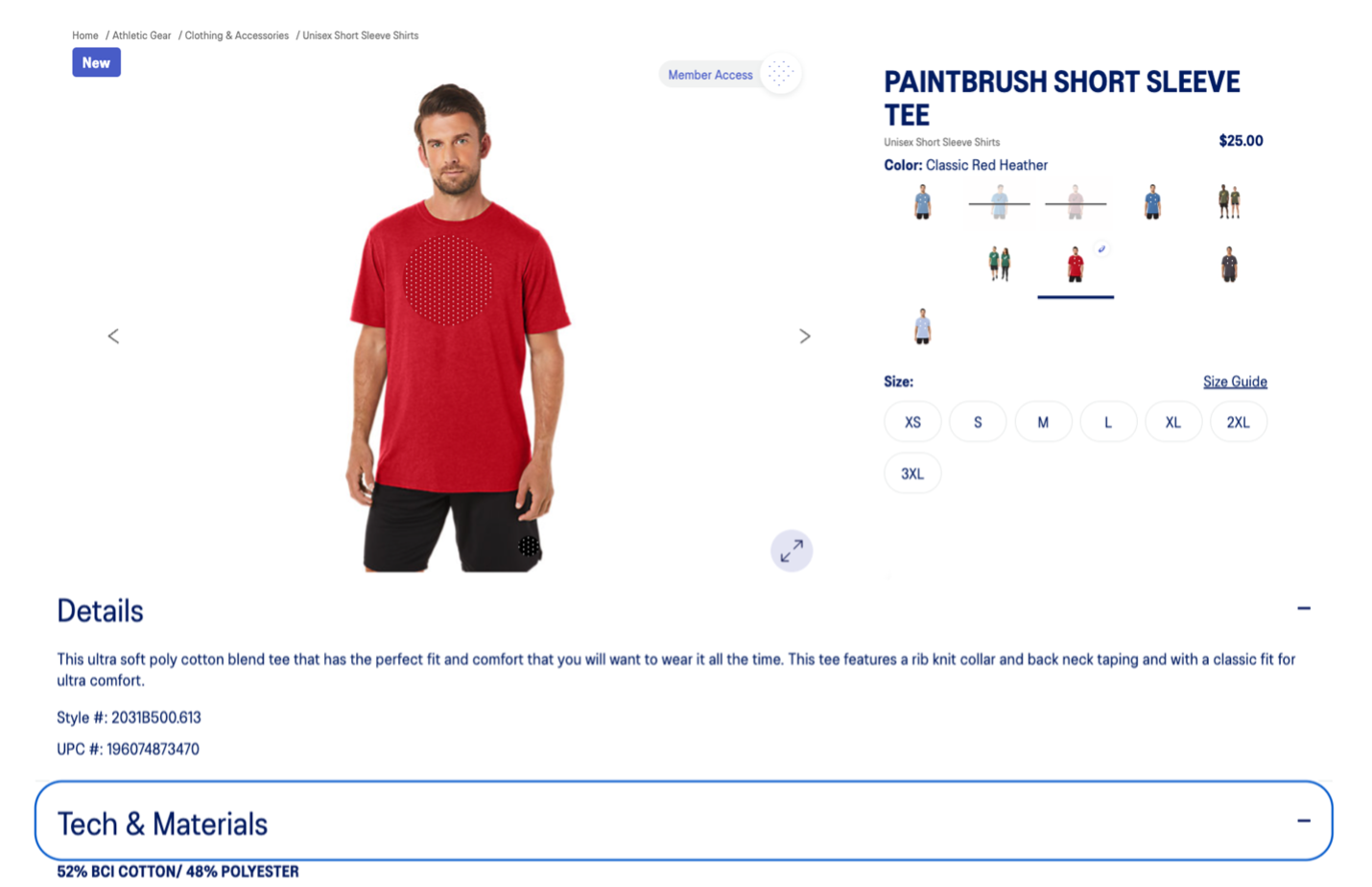
(Product page from leading global sports brand.)
The above product page is not out of the ordinary when it comes to the kind of product information available to LLMs. In fact, this is a product page from a leading global sports brand. This kind of poor product content ensures their products are all but invisible to the LLMs that power these chatbots.
Talkoot is an AI-powered product storytelling platform that helps retailers generate the kind of product content that inspires shoppers whether it’s through chatbots or on your own ecommerce site. Chat with one of our consultants if you’d like to learn more.
In my next post, I’ll dive into what type of product content will put your products on the Chat Experience Results Page of Bing, Gemini and ChatGPT.
See how leading brands are using Talkoot to increase conversion and get product content to market faster.
Book a demo >
See how leading brands are using Talkoot to increase conversion and get product content to market faster.
Book a demo >

